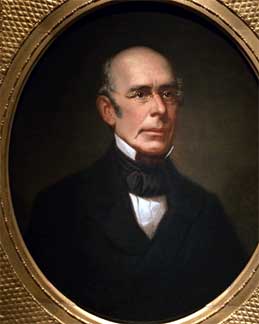
Garrison
On January 31, 1831, William Lloyd Garrison published the first issue of The Liberator. This newspaper was dedicated to ending slavery immediately. The abolitionists played an important role in developing opposition to slavery.
William Lloyd Garrison, born into a deeply religious family, began his journey towards becoming a significant figure in the anti-slavery movement as an apprentice at The Genesis of Universal Emancipation, a Quaker anti-slavery newspaper. This publication advocated for the gradual abolition of the institution of slavery, seeding the idea in Garrison's mind that would later shape his life's work.
Emboldened by his apprenticeship, Garrison decided to make his mark by founding his own newspaper, The Liberator. His fervor and determination were abundantly clear in his stance on slavery. He famously wrote, "On this subject, I do not wish to think, or speak, or write with moderation. I am in earnest. I will not equivocate—I will not excuse—I will be heard."
In 1833, Garrison joined forces with Lewis Tappan and Theodore Weld to establish a national organization—the American Anti-Slavery Society, dedicated to the cause of abolition. The Society gained significant momentum and played an instrumental role in the "Underground Railroad," an initiative that aided runaway slaves in their escape to freedom.
However, the road to abolition was fraught with challenges. The actions of the American Anti-Slavery Society were met with intense opposition. In 1837, abolitionist Elijah Lovejoy was brutally murdered while defending his press from a mob of anti-abolitionists in Alton, Illinois. In 1853, Garrison himself faced public humiliation when a mob in Boston paraded him around the city streets with a noose around his neck. The same year, another mob set the Society's Philadelphia headquarters aflame, destroying it.
Despite their unified goal of abolition, the Society members were often at odds regarding the best methods to achieve it. A chasm developed between the radicals, who advocated for immediate and absolute abolition, and the moderates, who were in favor of a gradual approach. In 1840, the Society fractured over a disagreement regarding women's rights, which eventually led to the effective dissolution of the American Anti-Slavery Society.
 >
>